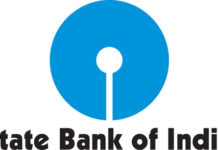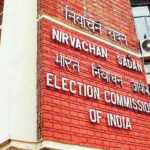Bank Merger – An Introduction –
- Since March 2017, the government has been desiring, to create 4-5 global sized lenders. In accordance with the same, the Government of India is now planning a merger of Bank of Baroda, Vijaya Bank and Dena Bank
- Before that, on April 1, 2017, the Government had merged State Bank of India with its 5 associate banks and Bharatiya Mahila Bank.
- The Five Associate Banks of SBI that were merged with it are:
- State Bank of Bikaner & Jaipur,
- State Bank of Hyderabad,
- State Bank of Mysore,
- State Bank of Patiala
- State Bank of Travancore.
This merger had made SBI stand among top 50 banks in the world.
Newly Planned Bank Merger –
While Bank of Baroda already has a wide spread network, Dena Bank and Vijaya Bank are more regionally focused.
- The entity formed after this merger will be 3rd largest bank in India with country-wide reach.
- It will have a Deposit base of Rs 8.41 lakh crore and advances base of Rs 6.4 lakh crore.
- Since BoB has a nation-wide reach while Dena Bank and Vijaya Bank are more localised, this merger will provide better coordinated for network, low-cost deposits and subsidiaries.
- The combined entity will have a strong presence across the nation with more than 34% of low-cost deposits, a capital buffer of nearly 12% and a business book of Rs 14.82 lakh crore.
- Bank of Baroda is the biggest of the three with Rs 10.29 lakh crore of total business, followed by Vijaya Bank at Rs 2.79 lakh crore and Dena Bank at Rs 1.72 lakh crore.
- The provision coverage ratio (PCR) of the proposed amalgamated entity will be 67.5%, above the overall average of PSBs at 63.7%.
- Moreover, it will lead to an enhanced operational efficiency, wider bouquet of products and services for customers.
Reasons for Merging the Banks –
- Currently, Dena Bank is restrained from lending any further as it is under PCA (Prompt Corrective Action) and the other two banks have the strength to subsume a weaker bank.
- Dena Bank has a gross NPA ratio of 22%, among the highest across the industry. While Bank of Baroda, the largest of the three, has a bad loan ratio of 12.4% and Vijaya Bank, on the contrary, is among the better performing public sector banks with a gross NPA ratio of 6.9%.
- One of the main reason for merging the banks is to tackle the issue of mounting bad loans. Bad loans refer to loans where corporate borrowers are not re-paying their dues to banks.
- Another reason behind the choice of these banks was due to the fact that all three use the same core banking system, ‘Finacle’ from Infosys which will ease the merger of the technology platforms and back-ends smooothly.
- The merger will make the banks stronger and sustainable as well as increase their lending ability.
- Also, this merger is expected to cater to the issue of reducing demand of fresh loans in the economy.
- Finance Minister Arun Jaitley stated that bank lending was becoming weak and in turn was hurting corporate sector investments. Also, many banks were in a fragile condition due to excessive lending and ballooning NPAs.
Major Points about the Banks –
| Name of the Bank | Short Form | HQ | MD/CEO | Tagline | Founding Year | Founded By |
| Bank of Baroda | BOB | Vadodara | P.S. Jayakumar | India’s International Bank | 1908 | Maharaja Sayajirao Gaekwad III |
| Vijaya Bank | VB | Bengaluru | R.A.Sankara Narayanan | A friend you can bank on | 1931 | Sri Attavara Balakrishna Shetty |
| Dena Bank | DB | Mumbai | Ashwani Kumar | Your trusted family bank | 1938 | Family of Devkaran Nanjee |
Section 44A of Banking Regulation Act 1949 –
Section 44A of the Banking Regulation Act, 1949 Lays Down the Norms for Voluntary Mergers.
Section 44A: Procedure for Amalgamation of Banking Companies –
- No banking company under the force of any law, shall be amalgamated with another banking company, unless a scheme containing the terms of such amalgamation has been placed in draft before the shareholders of each of the banking companies concerned separately, and approved by a resolution passed by a two-thirds majority of the shareholders of each of the said companies.
Forced Mergers are Done under Section 45 of the Banking Regulation Act –
- The Reserve Bank can apply to the Central Government for an order of moratorium for a banking company.
- The Central Government, after considering the application made by the Reserve Bank may make an order of moratorium staying the commencement or continuance of all actions and proceedings against the company for a fixed period of time on such terms and conditions as it finds proper and may from time to time extend the period on condition that the total period of moratorium shall not exceed six months.
What are the benefits of this Bank Merger –
- This newly planned Bank merger of Bank of Baroda, Dena Bank and Vijaya Bank will be able to rejuvenate the public banking sector and will make the banks stronger and sustainable as well as increase their lending ability.
- It will not only address the bad loans issue but also increase the demand for fresh loans.
- This will also aid the merged entity to adhere to Basel Norms – III with large capital base.
So these are the important details that you need to know about the Bank Mergers among important banks in India.
















